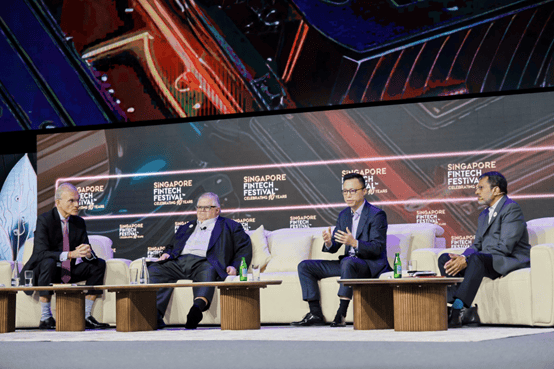

The business argument for embracing inclusivity and diversity is irrefutable.
Inclusion is essential for a healthy work environment. It means creating an environment where all employees feel valued, respected, and have equal access to opportunities. Inclusive workplaces foster a sense of belonging and promote diversity, resulting in better decision-making, increased innovation, and improved productivity. In an article published in the Harvard Business Review, the authors state that strong feelings of belonging by employees were associated with a 56% improvement in job performance.
In the tech industry, where creativity and problem-solving are crucial, having a diverse workforce with different perspectives is vital. When employees from different backgrounds work together on a project, they bring their unique experiences and ideas to the table. This diversity of thought leads to more innovative solutions and a competitive edge for the company.
The call for a more diverse tech industry is not a matter of optics but a necessity for growth. This is aligned with McKinsey & Company’s discovery that companies in the third quartile of gender diversity were 25% more likely to attain above-average profitability compared to their less-diverse counterparts.
Embracing the people experience, beyond HR
Diversity and inclusion in the workplace are evolving from being a responsibility solely held by HR departments to a widespread cultural shift that values people’s experiences. It is essential to recognise the importance of making this shift from an HR initiative to a company-wide mindset. At the same time, more tech companies need to ensure that their ways of working capture the entire employee life cycle and individual experiences. This not only allows for better representation of marginalised groups but also fosters innovation and growth within the tech industry.
An example is to set up a DEIB Council, made up of representatives from across the business, to enhance awareness and actively contribute to the advancement of DEIB within the company.
However, achieving true inclusion and diversity requires an ongoing effort from all individuals at all levels of the organisation. Here are tips for both employees looking to be a part of the transformation in their workplaces:
Educate yourself and practise open communication
Education and open communication are the first steps to challenging biases in the workplace. Many organisations offer learning opportunities through their learning and development (L&D) software. These platforms often include specialised pathways for diversity and inclusion training. Take advantage of these resources to educate yourself on unconscious bias. By expanding your knowledge and understanding of DEIB, you can become an advocate for change within your workplace.
Staying well-informed about global affairs and international developments would also broaden your knowledge base.
Promoting inclusion and diversity in the workplace is also closely tied to effective communication. Encourage open dialogue, active listening, and respectful communication among employees, creating an environment where all voices are heard and valued. Acknowledge your own prejudices, actively work to overcome them and call out biased behaviours when noticed. Establishing these communication norms promotes understanding, trust, and collaboration among diverse team members.
In addition, participate in surveys on Diversity, Equity, Inclusion and Belonging topics so that the management can understand what they do well, but, more importantly, what they need to do better. Forward-thinking companies survey employees regularly on a wide range of topics and DEIB. In doing this, they are able to identify and close any gaps continuously. It is also important to foster a culture of open communication as sustainable growth comes from addressing concerns expressed and ‘uncomfortable’ discussions with employees.
Support colleagues with disabilities
According to a Federation of Small Businesses report, 97% of small business employers offer flexible working for employees with disabilities or health conditions but 52% of these individuals have faced barriers in the workplace. While there may be legal requirements in place to accommodate employees with disabilities, going above and beyond these obligations can make a significant impact on their experience.
The workplace should be an environment where people feel comfortable discussing disability. This openness is the key to enabling the company to provide support and, at the same time, to promote awareness about how colleagues can assist one another with their specific needs.
Be flexible in interactions and work arrangements. This could include working from home, adjusting work hours, or providing a modified workstation to accommodate specific needs. These adjustments not only make it easier for employees with disabilities to perform their jobs, but also show that their employer values their contributions and is willing to make accommodations for them.
Encourage opportunity transparency
Recruiting practices significantly impact workplace diversity. Expanding hiring efforts to attract a diverse range of candidates from various backgrounds, education levels, and life experiences is a powerful step towards inclusivity. Ensuring your hiring process is free from any potential biases and having a fair career path for all with unbiased promotions further solidifies your commitment to diversity, ensuring all candidates are given equal consideration.
In addition, conducting a biannual performance evaluation, promotion, and reward cycle ensures that every individual is fairly compensated for their valuable contributions. Before making decisions, thoroughly assess and address unequal treatment among various groups as well as disparities between men and women.
Promote (reverse) mentorship opportunities
Mentorship holds an integral place in the tech industry, equipping mentees with the requisite technical skills and guiding them on how to develop in their careers.
This knowledge is transferable, with mentees capable of sharing these learnings with juniors or in creating a diversity mentoring program. Giving employees who may have experienced exclusion in the past the chance to share their feedback and be included will be instrumental in strengthening teams, delivering better results, and improving the communication and experiences of employees. The most successful mentoring schemes I have overseen pair mentors and mentees based on the skills the mentee aims to develop.
Implementing reverse mentorship programs can supplement traditional schemes, integrating diverse views and perspectives that might otherwise have been overlooked. In this setup, the traditional mentoring relationship is flipped, with less experienced employees taking on the role of mentors for more senior or experienced colleagues. Participate in these programmes to encourage colleagues from various backgrounds to collaborate and share their unique perspectives and experiences.
From my experience, this reverse mentoring initiative has enabled teams to integrate the principles of other business units. For example, Product Managers often have a deep understanding of customer needs and market trends. This perspective can be valuable for managers of People Experience in creating more targeted job descriptions and recruiting strategies.
Be an active ally
As a woman or a member of a minority group, you may face unique challenges in the workplace. It’s essential to have allies who actively support and advocate for you.
Be that ally for others by standing up against discrimination and microaggressions.
You can also reduce the isolation of women or colleagues from minority backgrounds by choosing to work with them in the same location or project, if possible, to foster support, mentorship opportunities, and a sense of community. According to Deloitte, many workers are seeking experiential inclusive culture, where inclusion is rooted in their daily experiences.
Our male allies also have a role to play. In a recent article, McKinsey states that sponsorship from men, including facilitating opportunities for women and granting access to their professional networks, significantly enhances the likelihood of women’s ideas being not only heard (by 70%) but also getting implemented (by 200%).
Inclusion and diversity are not just buzzwords, they are essential components of a successful workplace. By actively promoting these values and incorporating them into everyday practices, we can create a truly inclusive and diverse environment for all employees. It takes effort from everyone to create a truly inclusive workplace, but the benefits are invaluable and well worth the investment.


